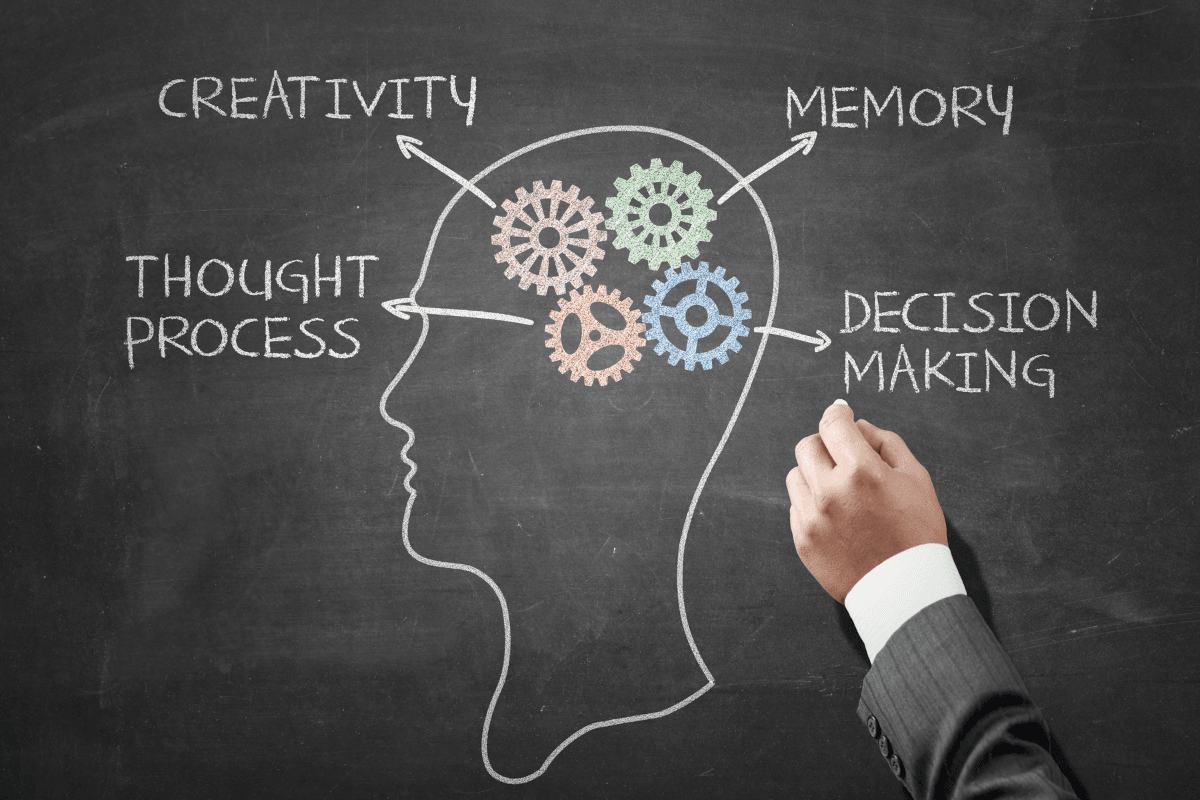Traditional leadership styles may no longer cut it when it comes to boosting your team’s productivity. At Buttimer Consulting, we believe that mindful leadership is the key to transforming stress into success.
In this article, you’ll learn about the principles of mindful leadership, how traditional styles affect organizational employee productivity, and the benefits of adopting a more thoughtful approach.
By embracing these strategies, you can enhance leadership development within your organization and achieve better outcomes in areas like accounting and beyond.
Employee Productivity: How Mindful Leadership Outperforms Tradition
Defining Employee Productivity in the Context of Leadership Styles

Understanding employee productivity starts with recognizing how different leadership styles influence your team. When leaders adopt various approaches, it directly impacts the workplace community and overall performance.
Traditional leadership often focuses on hierarchy and strict guidelines, which can limit opportunities for learning and growth. This style may create a rigid culture where innovation and adaptability are stifled.
On the other hand, mindful leadership emphasizes open communication and continuous education. This approach fosters a positive culture and leverages technology to enhance collaboration and efficiency:
| Aspect | Traditional Leadership | Mindful Leadership |
|---|---|---|
| Community | Top-down communication | Inclusive and collaborative |
| Learning | Limited training opportunities | Continuous education and development |
| Culture | Rigid and hierarchical | Flexible and supportive |
| Technology | Minimal integration | Embraces and utilizes technology |
| Education | One-time training sessions | Ongoing educational initiatives |
By choosing mindful leadership, you can significantly boost employee productivity through a supportive community, continuous learning, and a positive culture. This approach not only enhances efficiency but also ensures your team thrives in a dynamic environment.
Leadership styles set the pace for how teams perform. Now, let’s explore mindful leadership and the principles that drive it.
Understanding Mindful Leadership and Its Principles

Here, you’ll dive into the key traits of mindful leaders and see how mindfulness can transform your workplace culture.
Using tools like the internet, analytics, and even artificial intelligence, mindful leadership supports better advertising and business strategies. Whether you’re working towards a master of business administration or leading your team, these insights are valuable.
Key Traits of Mindful Leaders
Mindful leaders prioritize clear communication and actively listen to their team members’ ideas and concerns. By fostering an open workplace environment, you can enhance productivity and boost employee morale:
| Trait | Description |
|---|---|
| Empathy | Understanding and addressing employees’ needs and challenges. |
| Adaptability | Adjusting strategies based on data and feedback to improve outcomes. |
| Transparency | Being open about company goals and revenue targets to build trust. |
| Encouragement | Supporting continuous learning and employment growth opportunities. |
| Mindfulness | Maintaining focus and reducing stress to create a positive work culture. |
Additionally, mindful leaders leverage data to make informed decisions that drive revenue and streamline operations. By embracing these traits, you not only improve productivity but also create a supportive and thriving employment landscape for your team.
The Impact of Mindfulness on Workplace Culture
Mindfulness can transform your workplace culture by enhancing communication among your team. When you encourage knowledge workers to incorporate mindful practices, they become better at managing their workflow and collaborating on project management tasks, leading to smoother operations and fewer misunderstandings.
Additionally, integrating mindfulness into daily routines supports the overall health of your employees.
Healthier team members are more engaged and energized, fostering a positive environment that boosts productivity and creates a supportive workplace where everyone can thrive.
You’ve seen how mindfulness can reshape your approach. Now, let’s examine how traditional leadership styles impact your team’s productivity.
Traditional Leadership Styles and Their Influence on Productivity

Traditional leadership approaches often emphasize clear goals, hierarchical structures, and strict performance indicators.
While effective in human resource management, these styles can present challenges in remote work settings and impact customer experience. Understanding these characteristics and their drawbacks is essential as you explore more adaptive leadership methods.
Characteristics of Traditional Leadership Approaches
In traditional leadership, you’ll often find a clear hierarchy where decisions flow from the top down. Tools like ActivTrak are commonly used to monitor employee performance, which can impact the overall user experience by creating a more controlled and less flexible work environment.
Employee recognition tends to be limited in these settings, which can affect your motivation and job satisfaction.
Without regular acknowledgment of your efforts, you might feel undervalued, leading to decreased productivity and a less engaging workplace experience.
Challenges Associated With Traditional Styles
With traditional leadership, innovation often takes a backseat because strict guidelines leave little room for creative ideas. When you’re constantly following rigid structures, it can be tough to think outside the box and develop new solutions that delight your customers.
The high-pressure environment created by top-down decision-making can lead to significant stress among your team. Limited feedback opportunities and outdated software tools make it harder to address issues promptly, reducing overall productivity and harming the customer experience.
Traditional leadership has shaped many workplaces. Now, let’s see how mindful leadership stacks up against the old ways.
Comparative Analysis of Mindful Leadership and Traditional Styles

Research shows mindful leadership significantly boosts employee engagement by fostering a supportive environment. Developing emotional intelligence is a key skill for leaders to connect effectively with their teams.
Mindful leaders emphasize collaborative decision-making processes, contrasting with traditional top-down approaches. Investing in training and development, utilizing intranet tools, and continuous training are essential for enhancing productivity.
How Mindful Leadership Enhances Employee Engagement
When you embrace mindful leadership, you gain access to valuable information about your team’s needs and preferences, which directly boosts job satisfaction.
By actively listening and addressing concerns, you create an environment where employees feel valued and understood, enhancing their overall engagement with their work.
Mindful leaders also implement effective measurement strategies to track employee progress and payroll processes transparently.
This approach not only ensures that everyone is fairly compensated but also reinforces trust and loyalty, making your team more committed and motivated to excel.
The Role of Emotional Intelligence in Leadership
By developing your emotional intelligence, you can shape a strong organizational culture that values each team member’s contributions.
This understanding helps build a positive reputation, making your company a desirable place for college graduates and seasoned professionals alike, where creativity and efficiency are naturally nurtured.
With high emotional intelligence, you can address conflicts empathetically and inspire your team to collaborate effectively.
This approach not only boosts efficiency but also enhances your organization’s reputation, fostering an environment where innovative ideas flourish and everyone feels valued.
Differences in Decision-Making Processes
When you embrace mindful leadership, your strategy involves your team in key decisions, using collaborative tools that enhance workforce productivity and drive profit.
This inclusive approach ensures everyone feels valued, making the decision-making process smoother and more effective.
On the flip side, traditional leadership often relies on a single strategy, which can limit workforce productivity and reduce profit potential.
By being mindful, you create a work environment where decisions consider your team’s well-being, including ensuring they get enough sleep, leading to better outcomes for your business.
Having weighed both leadership approaches, the path forward becomes clear. Let’s explore how mindful leadership can elevate your team’s productivity.
Implementing Mindful Leadership Practices to Boost Employee Productivity

Boost customer satisfaction and reduce turnover by adopting mindful leadership practices like transformational and servant leadership.
Implement mindfulness training strategies and create a supportive environment that values continuous learning, including for those with a bachelor of science. These steps will enhance your team’s productivity and overall workplace well-being.
Strategies for Mindfulness Training in Organizations
Creating effective mindfulness training programs involves a blend of scientific approaches and practical incentives to engage your workforce. By integrating these strategies, you can significantly enhance employee engagement and overall productivity:
| Strategy | Description |
|---|---|
| Interactive Workshops | Utilize science-backed techniques in engaging workshops to teach mindfulness practices. |
| Incentive Programs | Provide rewards and recognition to encourage consistent participation in mindfulness activities. |
| Marketing Internal Campaigns | Promote mindfulness initiatives through internal marketing to increase awareness and involvement. |
By implementing these mindfulness training strategies, you not only support your workforce’s well-being but also foster a more engaged and motivated team, driving your organization towards greater success.
Creating a Supportive Environment for Mindful Practices
To create a supportive environment for mindful practices, your company should prioritize balancing workloads and leveraging information technology to streamline tasks. By intelligently managing resources, you can reduce employee stress and foster a more harmonious workplace.
In industries like insurance, embracing a supportive atmosphere means encouraging open communication and using data-driven insights to address your team’s needs.
This approach not only enhances employee intelligence but also ensures that everyone feels valued and motivated to perform their best.
With mindful practices in place, it’s time to look at the results. Let’s measure how different leadership styles shape employee productivity.
Measuring the Impact of Leadership Styles on Employee Productivity

To effectively boost employee productivity, it’s crucial to measure how different leadership styles impact your team.
You’ll explore key metrics for assessing productivity in mindful versus traditional leadership styles and examine case studies of organizations like IBM transitioning to mindful leadership.
Understanding these factors can enhance your project management software usage, customer service, and overall team behavior.
Metrics for Assessing Productivity in Mindful vs. Traditional Leadership
To effectively measure how your leadership style impacts productivity, focus on key metrics like absenteeism and risk management. Tracking these indicators helps you understand whether mindful leadership practices are reducing stress and enhancing team reliability:
- Absenteeism Rates
- Risk of Burnout
- Mentorship Effectiveness
- Onboarding Success
- Problem-Solving Efficiency
Additionally, evaluating the quality of mentorship, the efficiency of your onboarding process, and your team’s problem-solving abilities provides deeper insights.
By analyzing these metrics, you can see how mindful leadership fosters a supportive environment that boosts overall productivity and employee satisfaction.
Case Studies of Organizations Transitioning to Mindful Leadership
When organizations transition to mindful leadership, they often see a significant increase in employee productivity and overall workplace satisfaction.
Quantitative research from various case studies highlights the value of adopting these new leadership styles, demonstrating measurable improvements in team performance and engagement.
Here are some examples of companies that have successfully made the switch to mindful leadership and the results they’ve achieved:
| Organization | Policy Changes | Productivity Metrics | Email Address | Tools Used |
|---|---|---|---|---|
| Tech Innovators | Implemented flexible work hours and open-door communication | 30% increase in project completion rates | contact@techinnovators.com | Hubstaff, Slack |
| HealthPlus | Introduced regular mindfulness workshops and feedback sessions | 25% reduction in employee turnover | info@healthplus.com | Hubstaff, Zoom |
| Creative Minds | Adopted a collaborative decision-making policy | 40% improvement in team collaboration scores | support@creativeminds.com | Hubstaff, Trello |
These case studies illustrate how mindful leadership policies not only enhance productivity but also create a more engaging and supportive work environment.
By leveraging tools like Hubstaff and fostering open communication, these organizations have set a strong foundation for sustained success.
Frequently Asked Questions
How does mindful leadership improve employee productivity?
With Angela & Dennis Buttimer’s mindful leadership, you create a supportive workplace where employees feel valued and engaged. This approach lowers stress and enhances focus, leading to higher productivity and successful outcomes for your team.
What are the key principles of mindful leadership?
As a mindful leader, you focus on self-awareness, stay present, practice empathy, and lead with intention. By embracing these principles, you can transform stress into success with our expert coaching and holistic counseling services.
How do traditional leadership styles affect workplace productivity?
Traditional leadership styles, like authoritative or transactional, can significantly impact workplace productivity. Clear communication and support from leaders can motivate employees and enhance efficiency, while rigid approaches may stifle creativity and reduce overall output.
What differences exist between mindful and traditional leadership?
Mindful leadership emphasizes self-awareness and empathy, helping you genuinely connect with your team. In contrast, traditional leadership often prioritizes authority and results. By adopting a mindful approach, you create a supportive environment that fosters both personal growth and organizational success.
How can you measure the impact of leadership styles on your team?
At Buttimer Consulting, you can measure your leadership’s impact by tracking team productivity, conducting satisfaction surveys, and monitoring turnover rates. Regular feedback and observing morale help ensure your style drives success and fosters a thriving team.
Conclusion
Boosting employee productivity starts with adopting a mindful leadership approach that prioritizes connection, empathy, and growth over outdated traditional styles. If you’re ready to transform your workplace and lead with intention, Buttimer Consulting is here to guide you.
With our expertise in transformative speaking, coaching, and counseling, we can help you create an environment where your team thrives. Call us at (404) 949-9500 to learn more, or visit our website to take the first step toward empowered leadership today!









